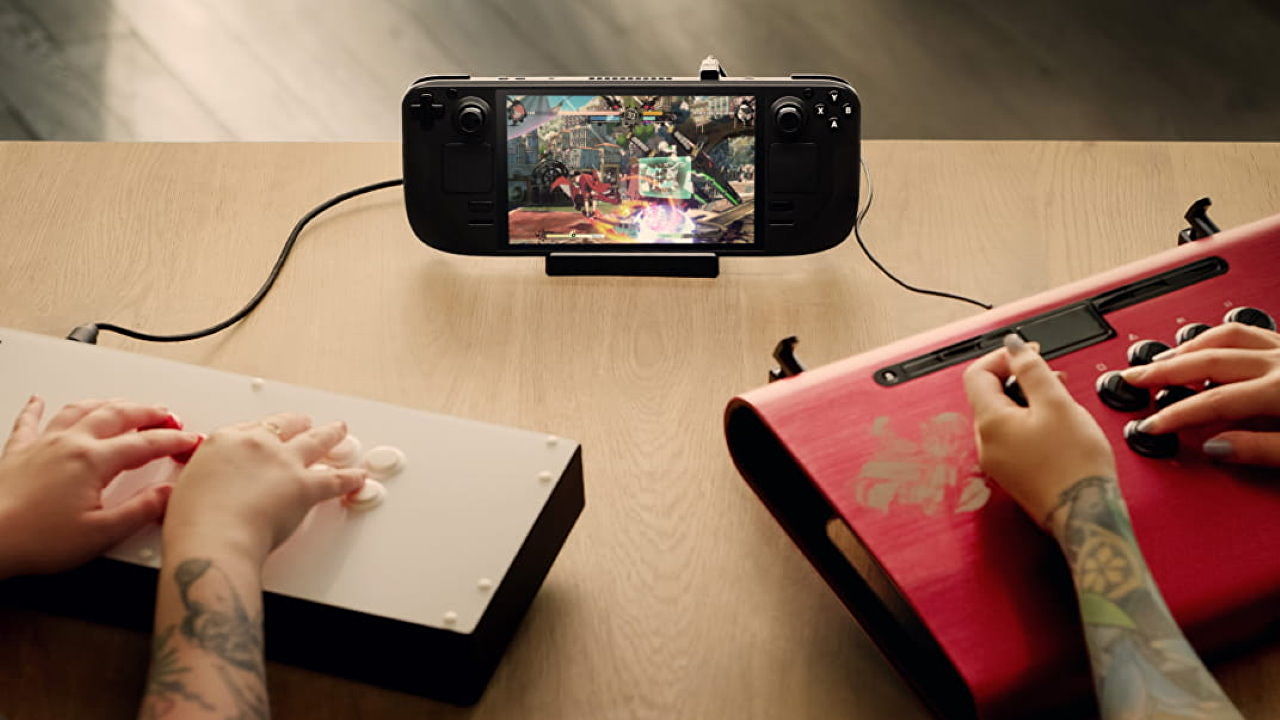While Valve just announced the handheld gaming console called the Steam Deck that’s taking the world by storm. But is it worth it to invest in a portable gaming PC? That’s why Wowkia is here to help.
Overview
The Steam Deck looks and functions similarly to other handheld consoles. But impressions say that the system is much more comparable to a gaming PC. The console intends to play steam library games.
The Steam Deck could theoretically be to do just about anything an average gaming PC will be able to do. Therefore, when considering the price of the $399/64 GB model, the $529/256 GB model, and the $649/512 GB model, it’s crucial to consider its capabilities beyond the SteamOS.
Also, it has four cores of AMD’s Zen 2 microarchitecture and AMD’s rDNA 2 GPU for a combined APU power at around 1.6 teraflops. For comparison, the Steam Deck’s capabilities are around the same as a PlayStation 4 and Xbox One.
But, it should outperform the PlayStation 4 or Xbox One slightly in actual usage because it runs at 720p resolution. There are no performance differences between the price points; instead, the price difference between models is only about larger and faster storage and an anti-glare etched glass screen at the highest point.
Price Comparisons
The Steam Deck has drawn comparisons to the Nintendo Switch (OLED Model). The size and design of both consoles are very similar. They both have a seven-inch touchscreen. Although the Steam Deck will be larger than the Nintendo Switch (OLED Model). The Steam Deck is two inches wider and half an inch taller than the Nintendo Switch, and it’s also almost twice as heavy.
There isn’t much-wasted space on the Steam Deck’s face. Considering it has sticks, a directional pad, buttons, and a touchpad, hence the bulkiness. However, the Nintendo Switch does win on battery life ( four to nine hours for the Switch against two to eight hours for the Steam Deck); the Steam Deck utilizes even more battery due to more demanding game content.
In addition, the base model of the Steam Deck comes to only around $50 more expensive than the Nintendo Switch (OLED Model). So, for simplicity’s sake, both consoles are reasonably priced for consumers’ specs. The main difference between the two is their respective game libraries and Steam Deck’s power advantage over the Switch. However, it’s essential to remember that the Switch will likely be the more streamlined and user-friendly of the two.
Is The Steam Deck Made for The Steam library?
The one huge aspect of the Steam Deck that’s very important to consider is while Steam boasts a library of over 50,000 games, none of those games have been designed with the Steam Deck.
Although most PC games that generally require less precision than a mouse and keyboard will work well. However, because of that, it eliminates the most popular games that currently dominate Steam’s top most-played list. Like CS: GO, Dota 2, PUBG, Rust, and more. Within that list, Rust seems to be the only game where an on-the-go player will feasibly be competitive. Unless they choose to use it like a PC and plug in a mouse and keyboard. But then there’s not much of an argument against just purchasing a desktop PC at that point.
Despite this, the portion of Steam’s community that enjoys competitive games won’t get much use out of any portable system. Still, for the more laid-back, casual gamers, the Steam Deck offers everything they could ask.
Total Cost Potential of Buying The Steam Deck
Since the difference between the three models of the Steam Deck is mostly just storage size and speed. It will be difficult for customers to determine which one they should buy. However, the two more expensive models (the 256/512 GB versions) offer NVMe drives, meaning they’ll provide faster load times than the 64 GB model.
All three models will allow for an SD slot to increase memory; the cost of purchasing a microSD card to span the difference in storage space, for example, from 64 GB to 256 GB storage, puts the total cost close to the 256 GB model anyways. However, customers may want to stretch for the more expensive model right off the bat since they will come equipped with NVMe drives.
There’s one last consideration for Steam Deck owners to make. The current prices don’t include the official Steam Deck dock, which means the total cost of the purchase can start to get a bit out of hand. But, again, it still seems worth it from nearly every aspect. Still, if people end up purchasing the 512 GB version with a MicroSD card to enhance storage, the official dock and peripherals like a keyboard, mouse, and headset will make the cost climb significantly beyond the $649 entry point.
The Valve Steam Deck is expected for release this holiday.
